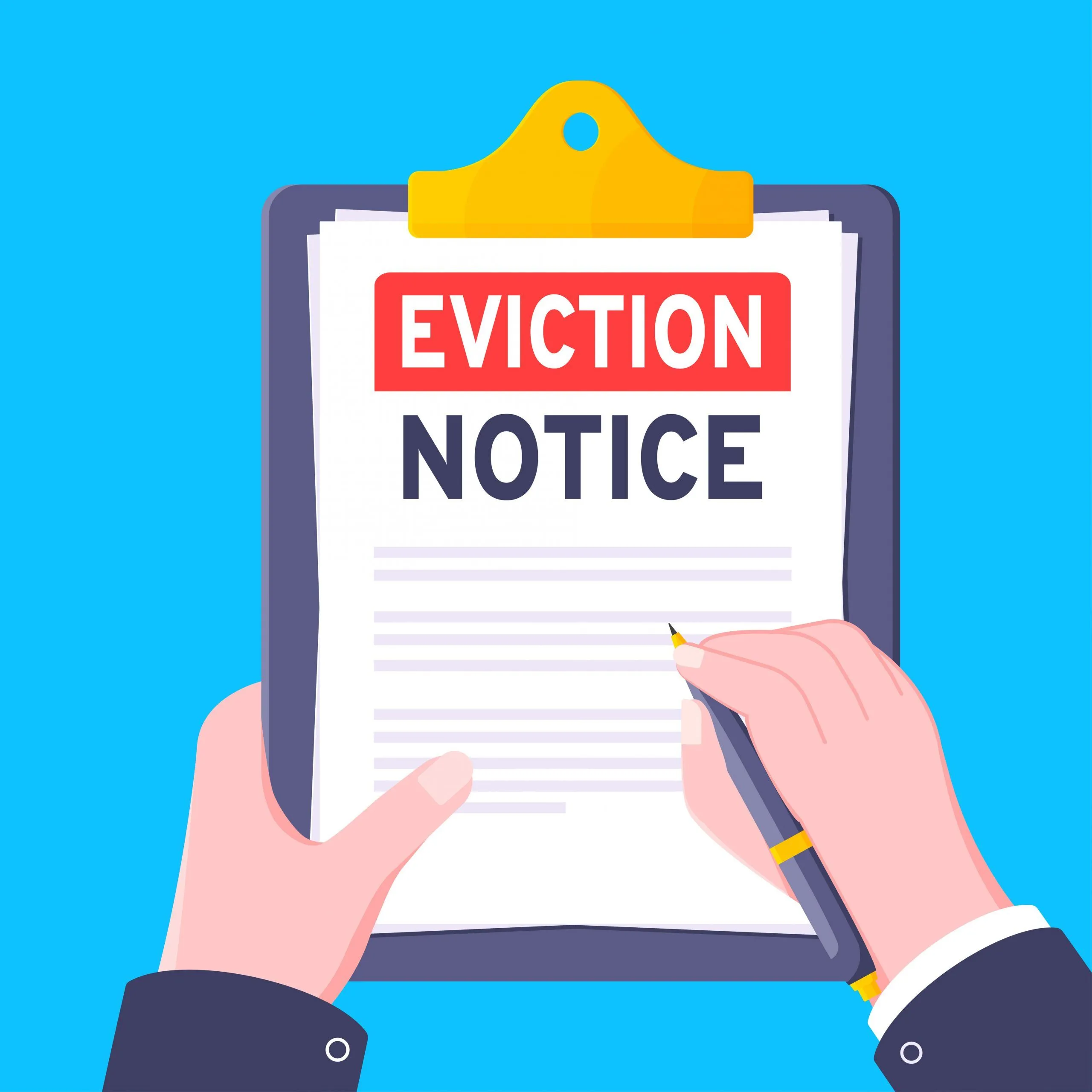For many, the eviction process is scary to think about getting yourself into. Especially in California, landlords have to live in fear of a drawn-out eviction process and thousands of dollars of damages. So, this begs the question, how do you navigate this process?
What is the Eviction Process:
The Eviction Process is a legal procedure to remove a tenant who violates lease terms. Please note that you must have "just cause" to evict a tenant from your home, or else you may be at risk of a lawsuit, losing your home, or paying a fine.
The basic process is to serve a notice, file an unlawful detainer lawsuit, attend court, and obtain a writ of possession if necessary. However, you must always be sure to follow the California-specific laws that are in place to avoid those legal pitfalls. If you want a more in-depth guide on the eviction process, you can check out our blog post here.
When is it Time to Evict Someone?
Eviction is often a last resort, necessary only when the tenant's behavior disrupts the rental arrangement. Everyday situations that warrant eviction include:
- Persistent non-payment of rent
- Lease violations (such as unauthorized occupants or pets)
- Damage to property
- Illegal activities being conducted on the premises
- The tenant refuses to vacate after the lease has expired
While eviction should not be the first response, these issues significantly impact the landlord's ability to maintain property value and rental income, making eviction necessary in some cases.
How to Start the Eviction Process:
The eviction process begins with serving the tenant a notice, which varies based on the issue. A "Pay or Quit" notice is issued if the tenant has failed to pay rent and typically gives the tenant a few days to pay or vacate. A "Cure or Quit" notice is used for lease violations such as having unauthorized pets or additional occupants. Lastly, an "Unconditional Quit" notice is used for more severe issues, like illegal activities or significant property damage, where no opportunity to fix the problem is given.
If the tenant does not comply with the notice, the next step is to file an unlawful detainer lawsuit in court. This lawsuit formally requests the eviction and schedules a court hearing. Landlords must present evidence at the hearing, such as documentation of the issue and proof of attempts to resolve it. If the court rules in favor of the landlord, the tenant is legally required to vacate the property. If the tenant still refuses to leave, a writ of possession can be obtained, which allows law enforcement to remove the tenant forcibly.
For more information, I have provided the Judicial Branch of California's guide on the eviction process here.
How to Avoid Future Evictions:
While some evictions are inevitable, there are several strategies landlords can implement to avoid future evictions. One of the most effective strategies is thorough tenant screening. Which generally includes checking credit reports, conducting background checks, and verifying references to ensure the potential tenant is reliable and financially responsible.
Equally important is having clear and comprehensive lease terms. Make sure the lease includes specific rules, such as policies on pets, guest limits, and payment schedules. When expectations are clearly outlined in writing, tenants are less likely to breach the terms unknowingly.
Maintaining open communication with tenants is another key element in preventing eviction. Regular check-ins, addressing concerns early, and providing opportunities for tenants to communicate issues can prevent situations from escalating.
Finally, always keep thorough records of payments, communications, and any notices served. This documentation can be essential if legal action becomes necessary, as it provides a clear history of the landlord-tenant relationship.
Can Property Management Save Me from Evictions?
Navigating the complexities of eviction law in California can be challenging. Property management companies can help landlords by screening tenants thoroughly, handling lease enforcement, and ensuring compliance with state laws. If an eviction is necessary, a property management company can manage the entire process, from serving notices to attending court hearings, thus relieving the landlord of significant stress and potential legal pitfalls.
Hiring a property manager can ensure that eviction procedures are handled properly and efficiently, allowing landlords to focus on growing their investments while maintaining peace of mind.
If you would like to learn more on how to find the right property management company for you, please click here.
Final Thoughts & Opinions From a Professional:

Let's be honest: being a landlord in California is tough. You can do all the right things but still get into a bad situation. The eviction process is daunting and probably the scariest part of my job. However, it isn't the end of the world; you will be okay, and at the end of the day, at least you are taking the first step to remedy a bad situation.
If this is your first time going through this process, I recommend you find someone you trust to help you instead of just reading a guide online. Call a real estate lawyer or even talk to a judge (if possible); anything that enables you to get your tenant out as quickly as possible is worth it in the long run.


